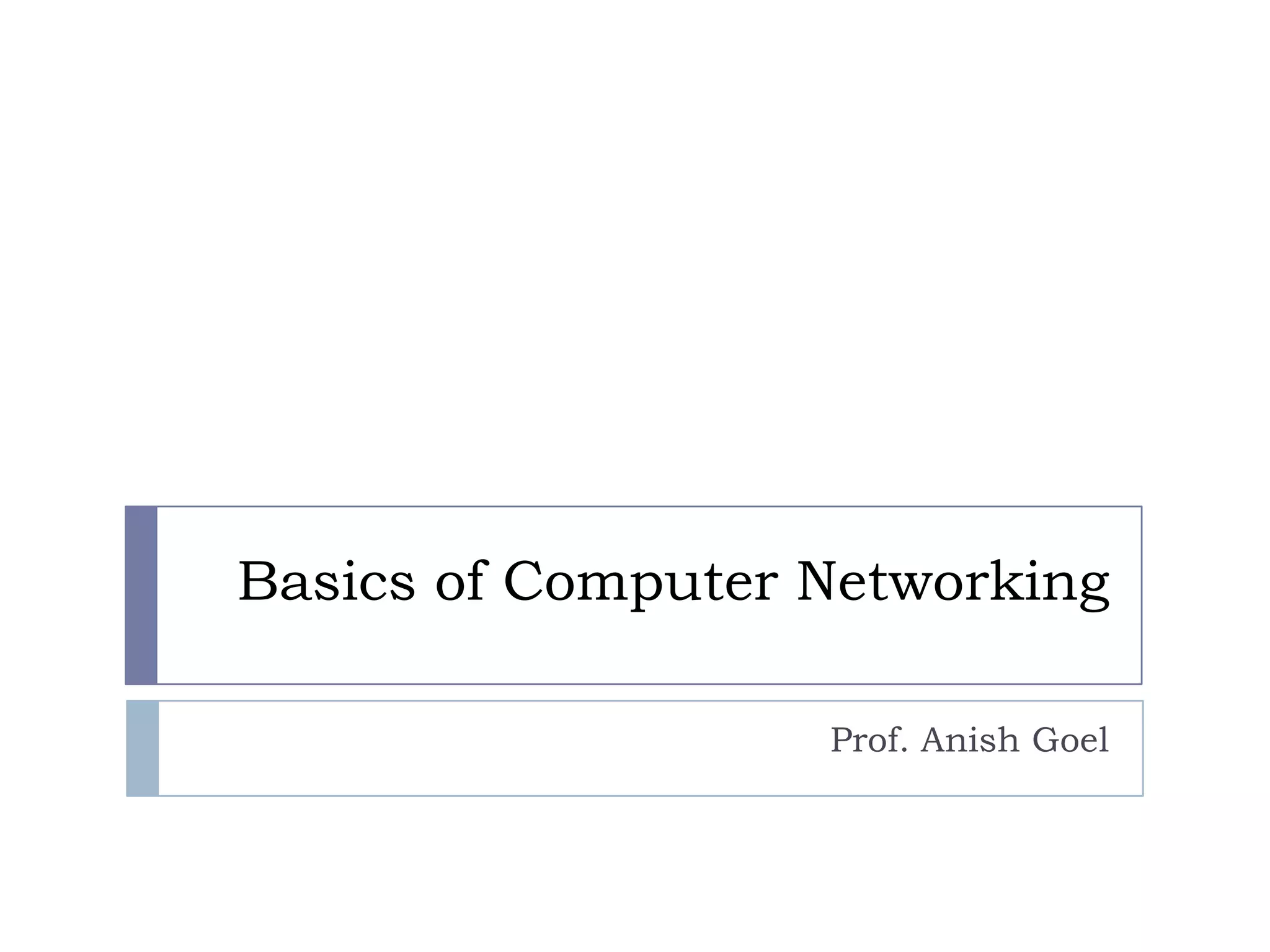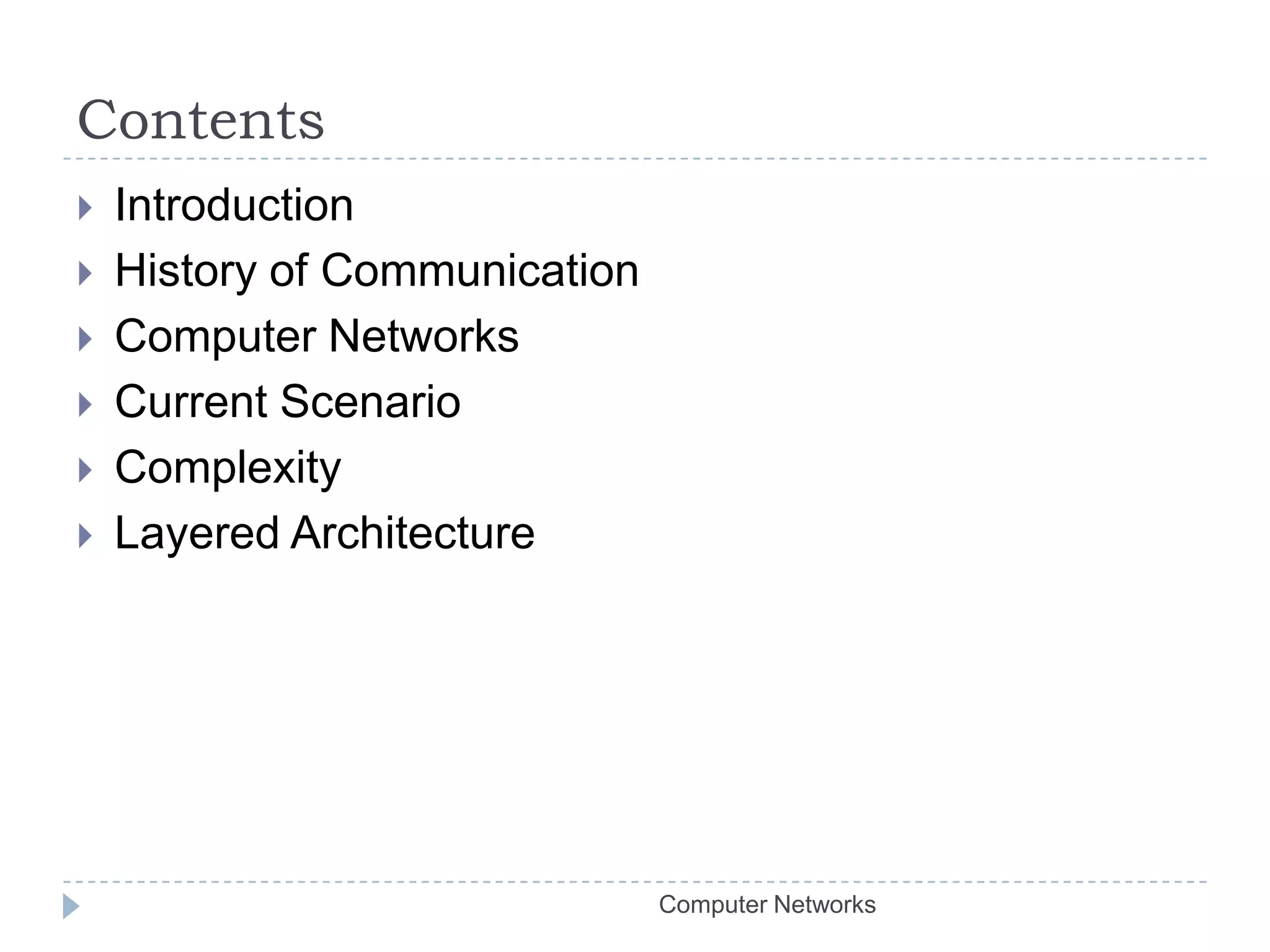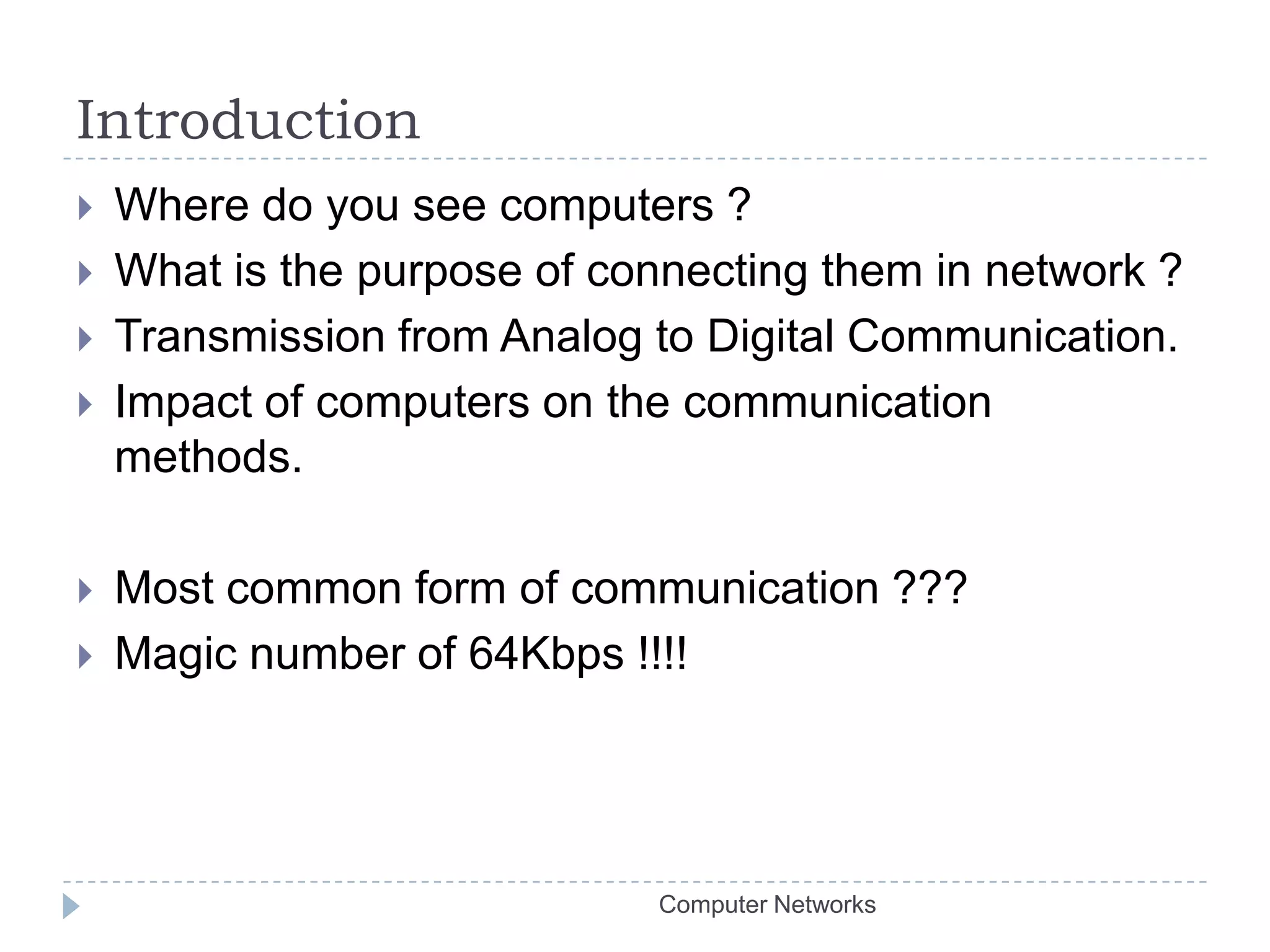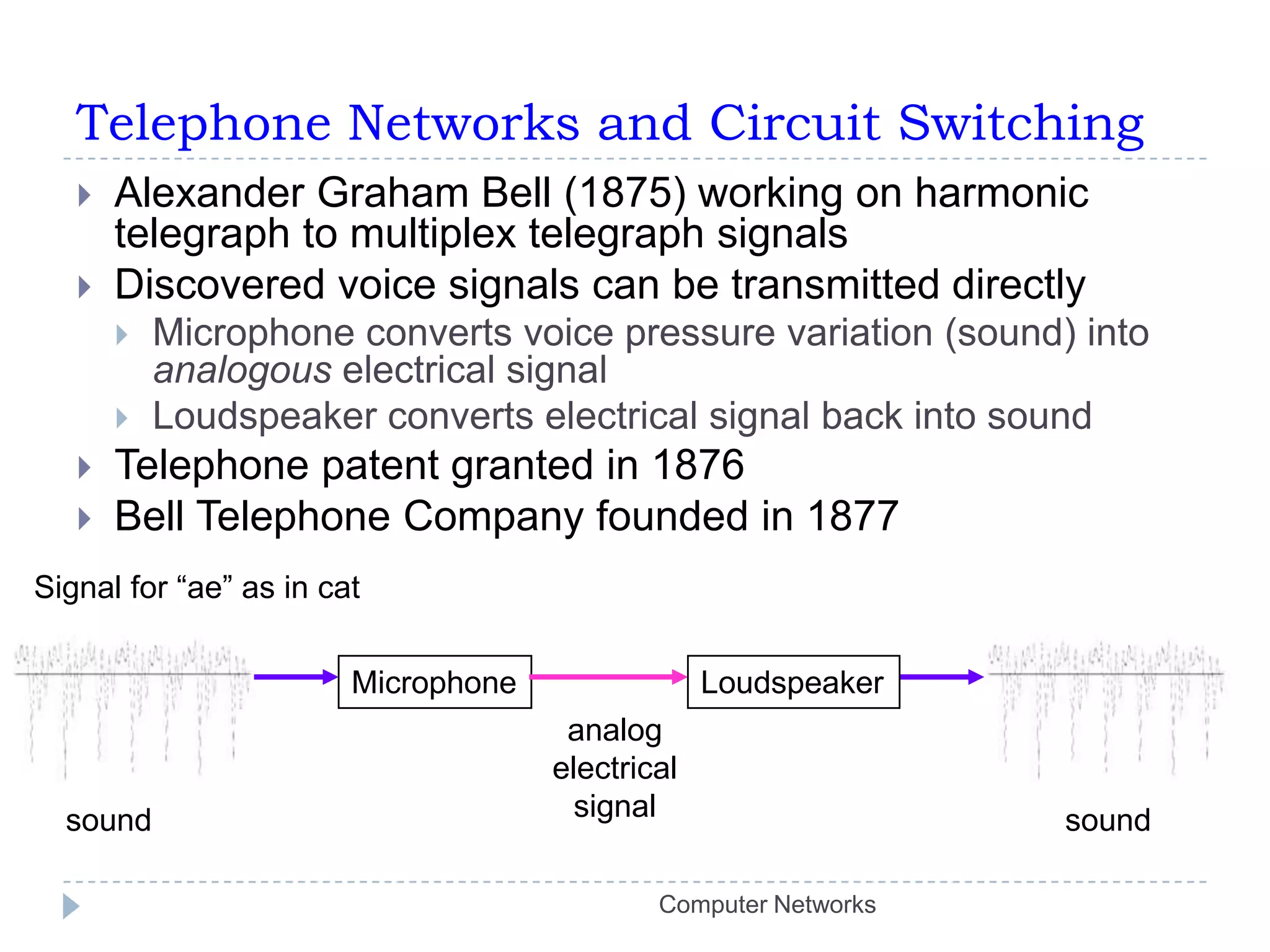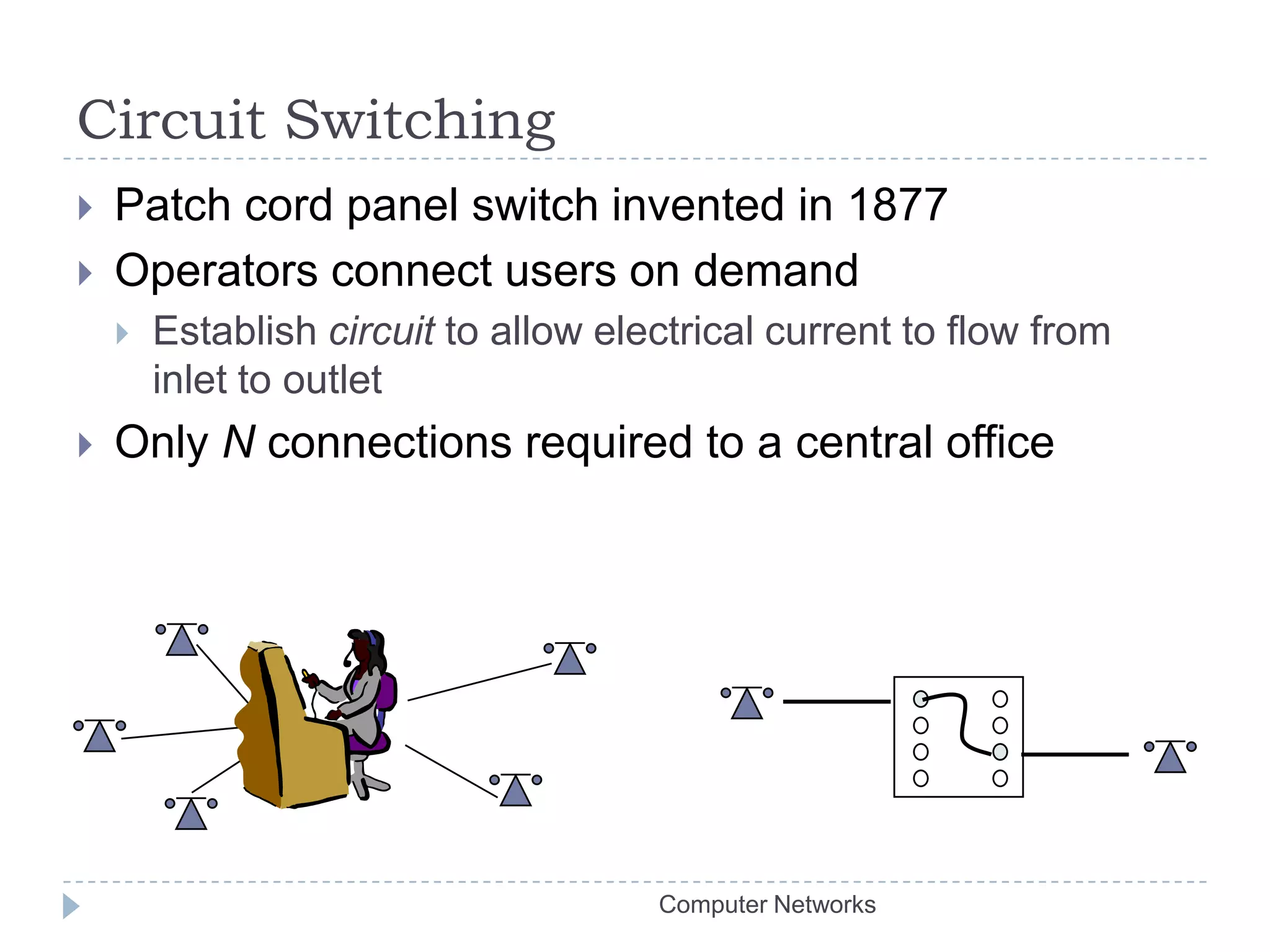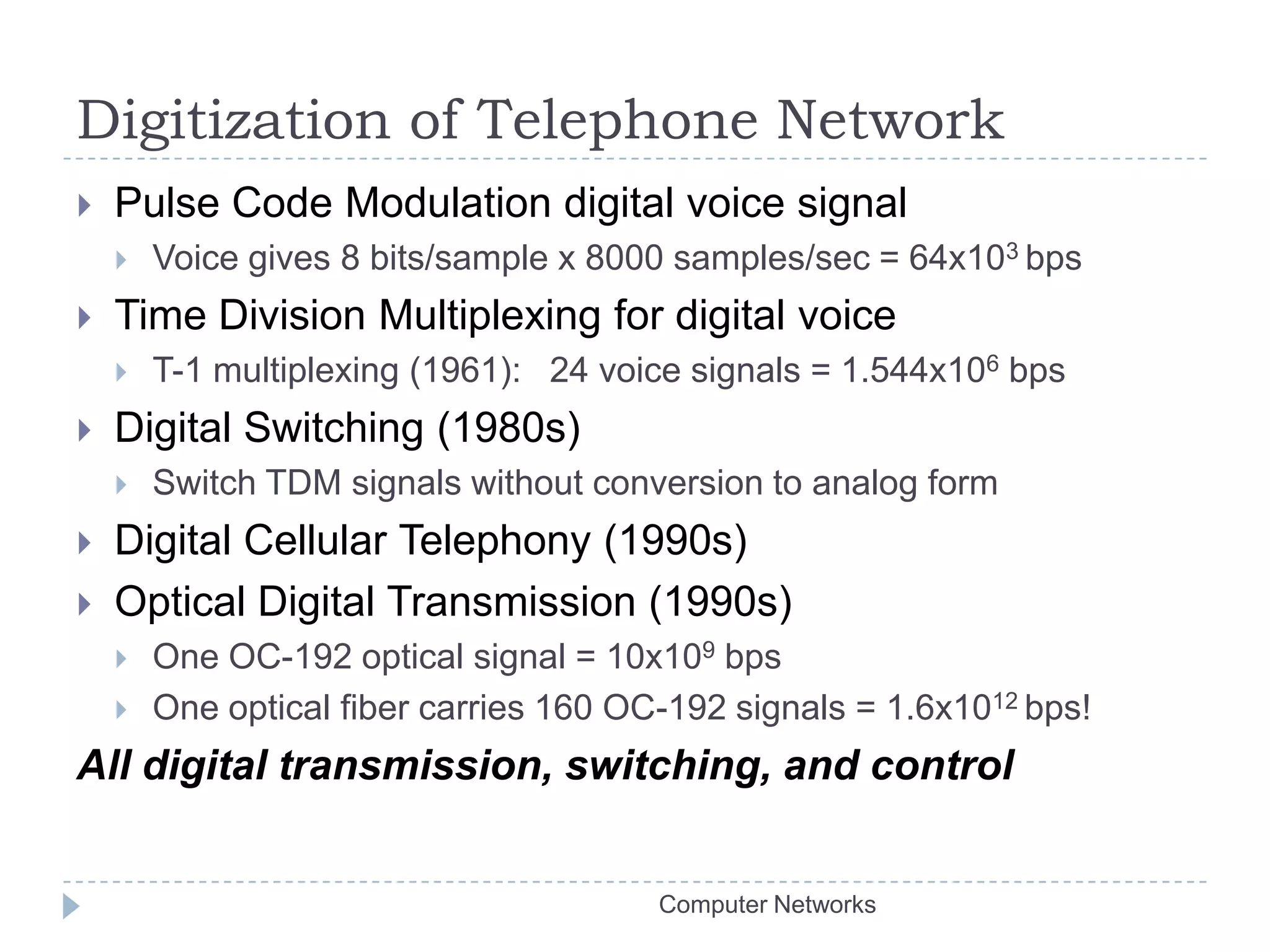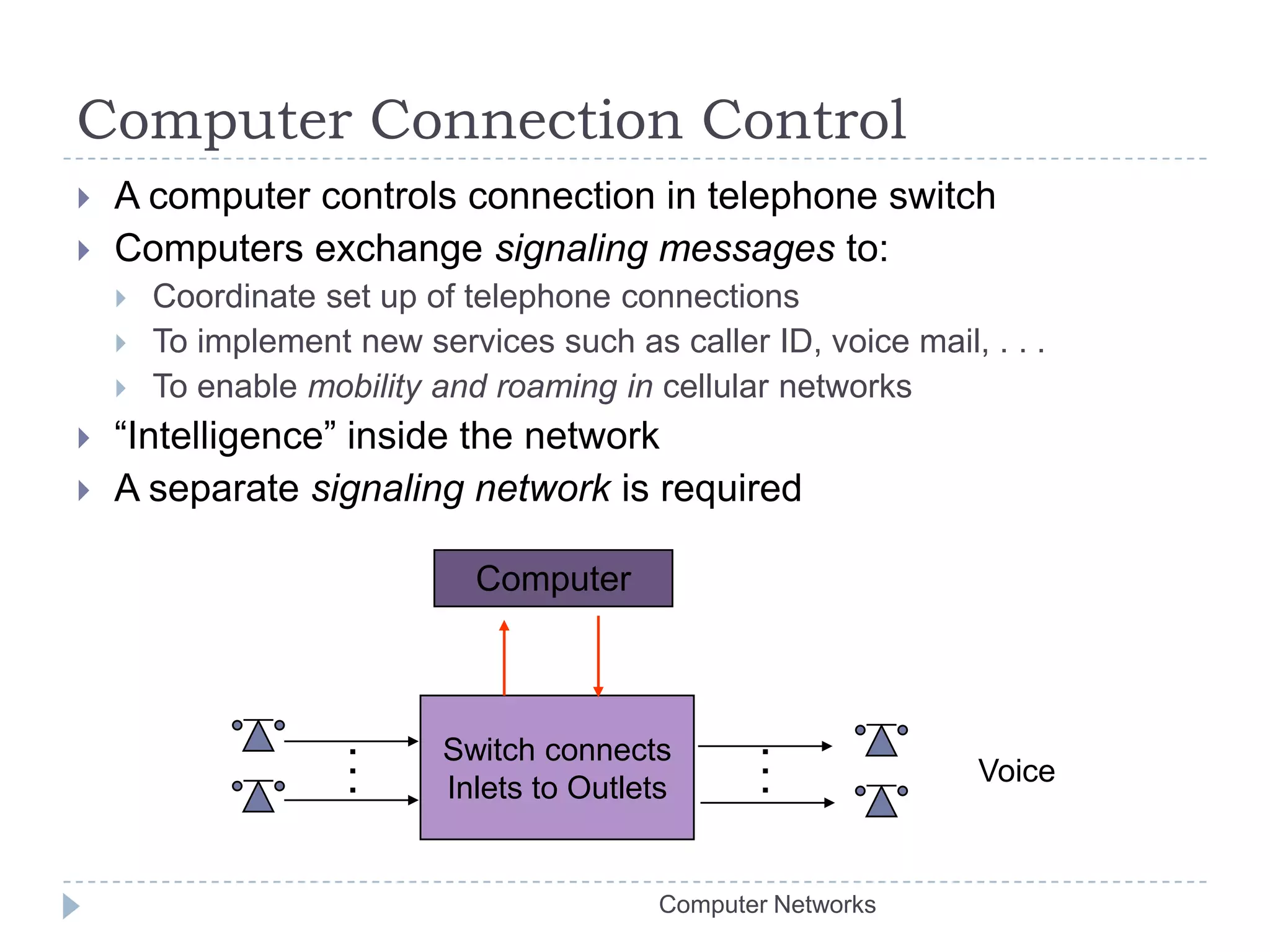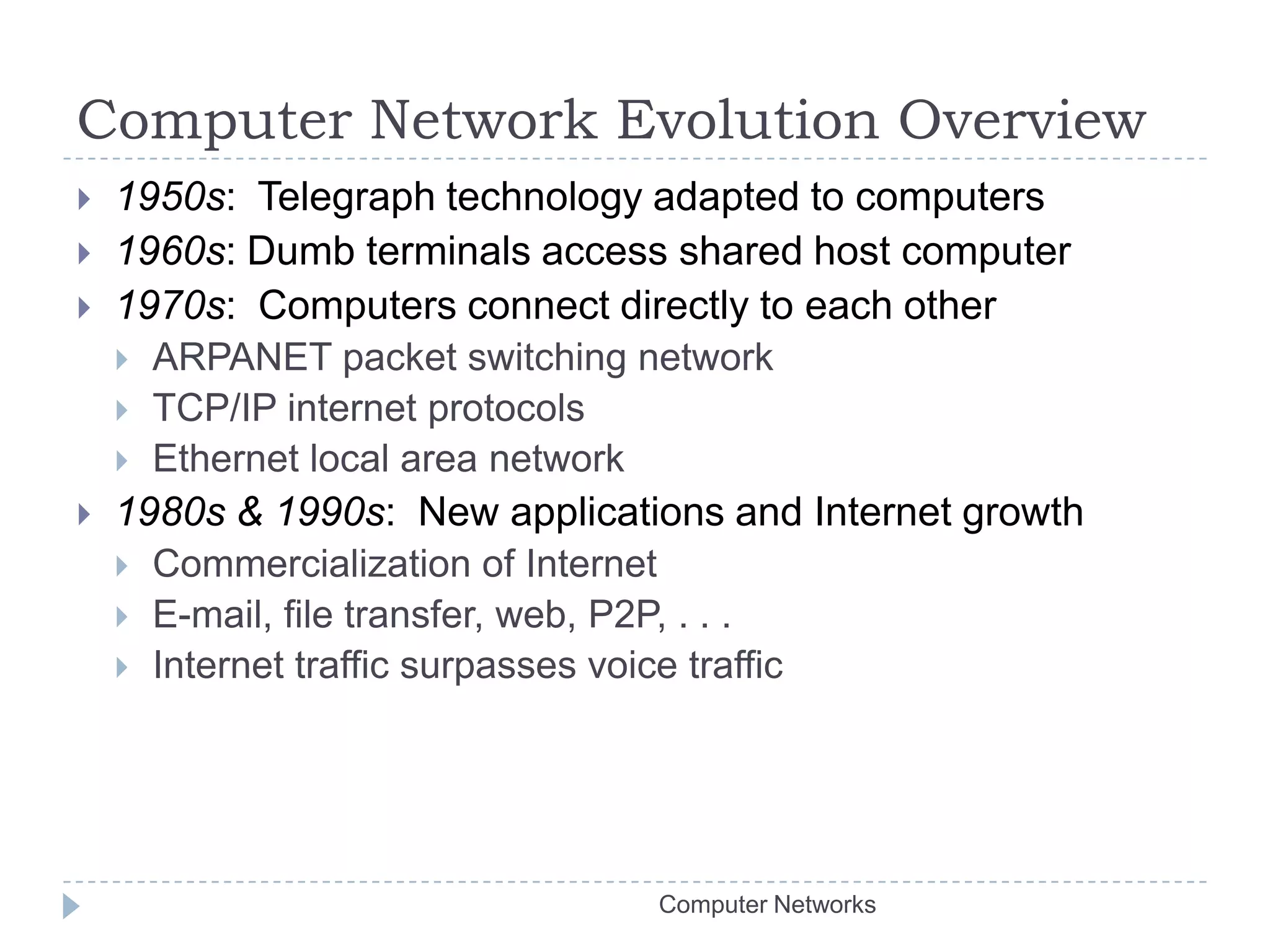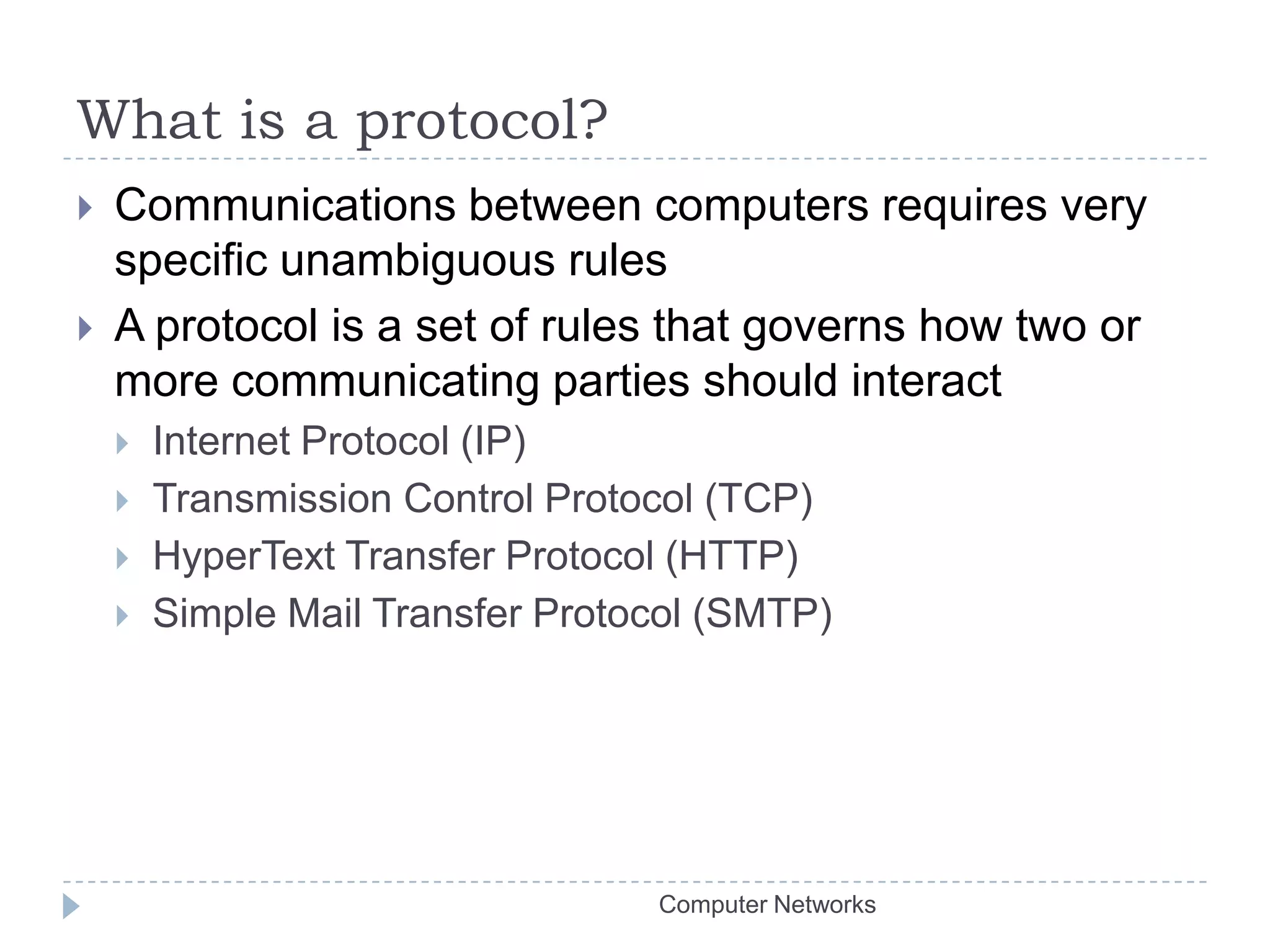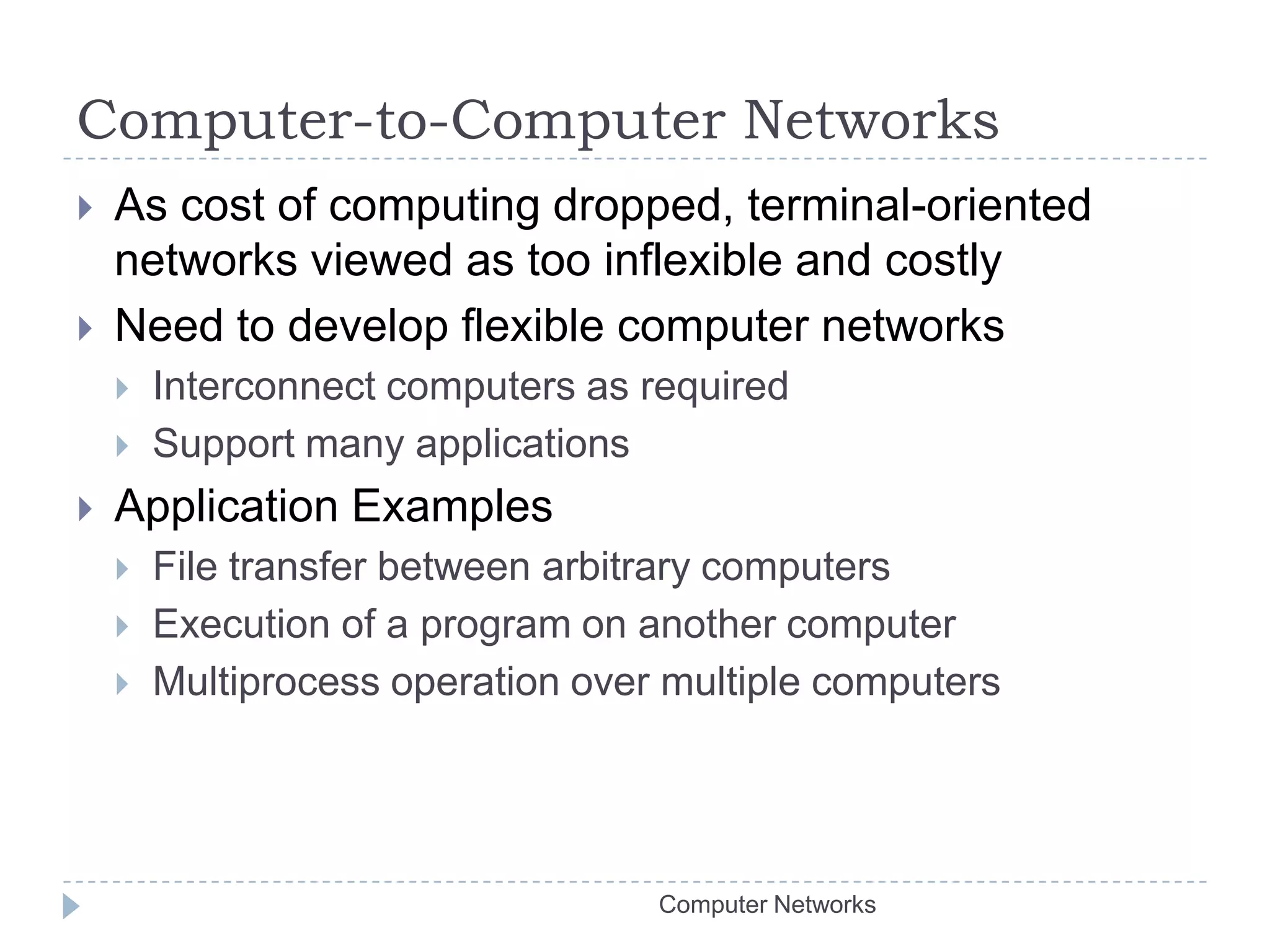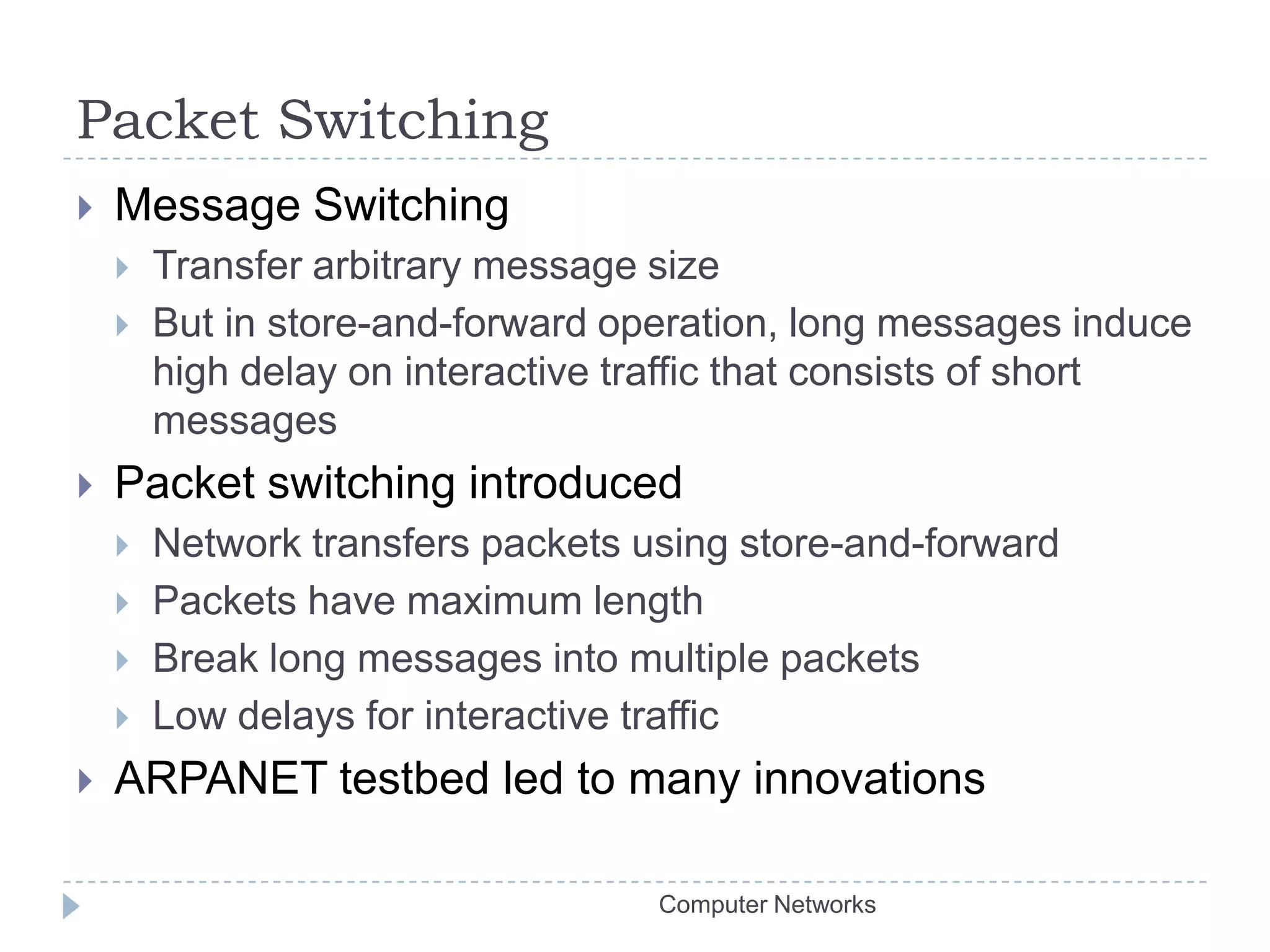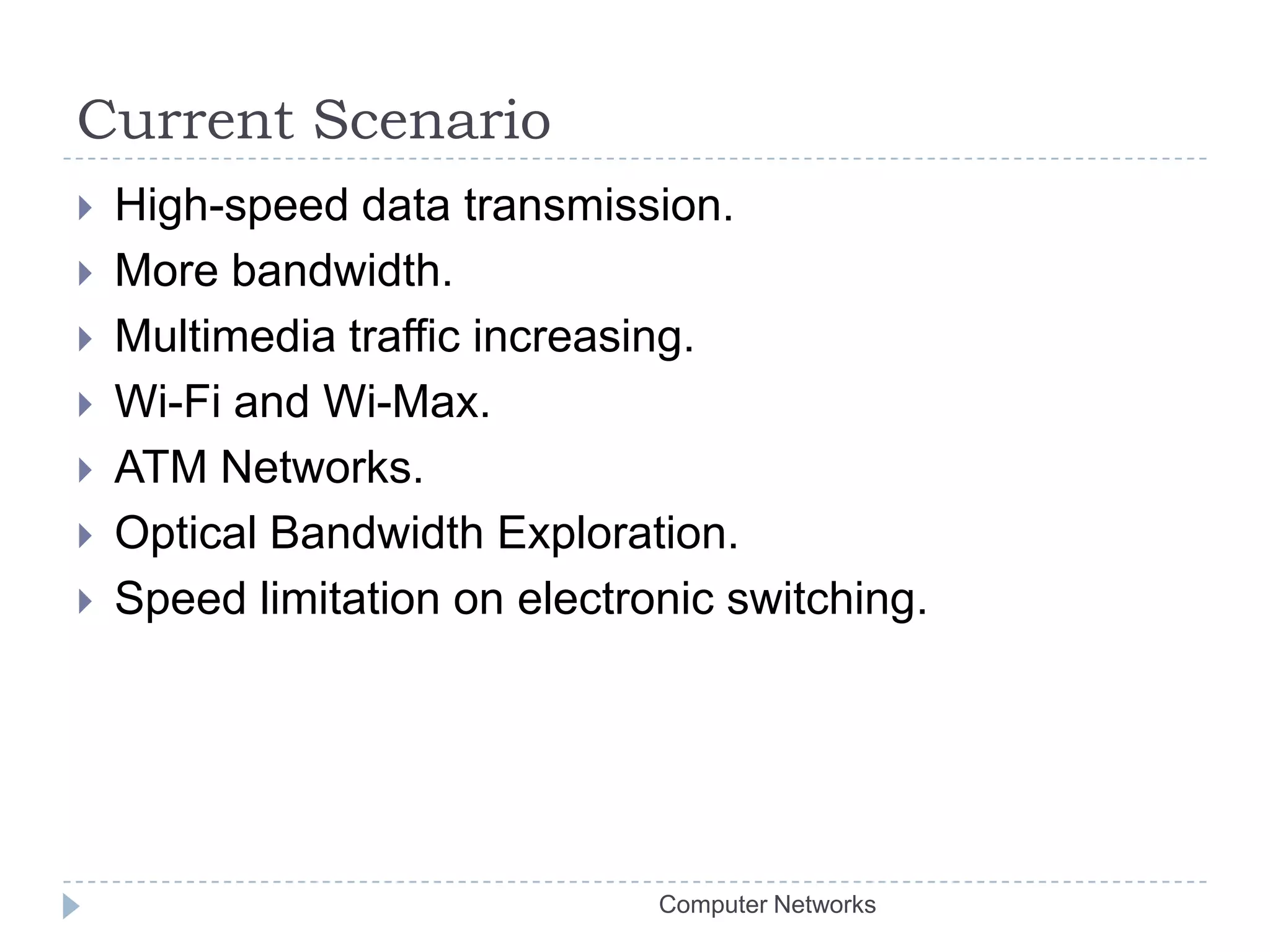The document provides an overview of the evolution and fundamentals of computer networking, covering topics such as historical communication methods, circuit switching, and the importance of protocols. It details the transition from analog to digital communication, including significant technological advancements like packet switching and digital telephony. The current landscape emphasizes high-speed data transmission and the growing demand for multimedia traffic and bandwidth.
